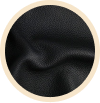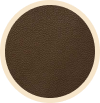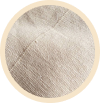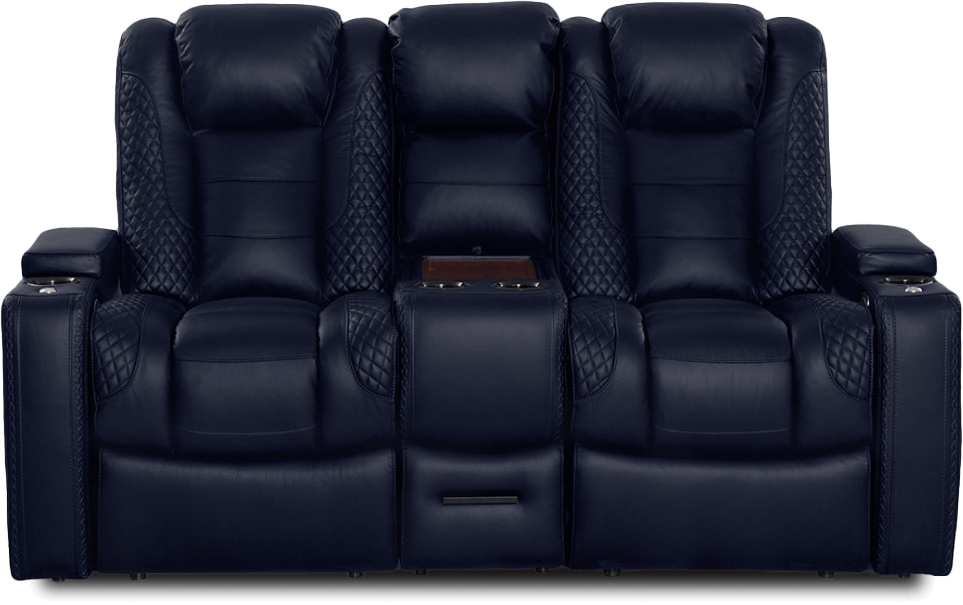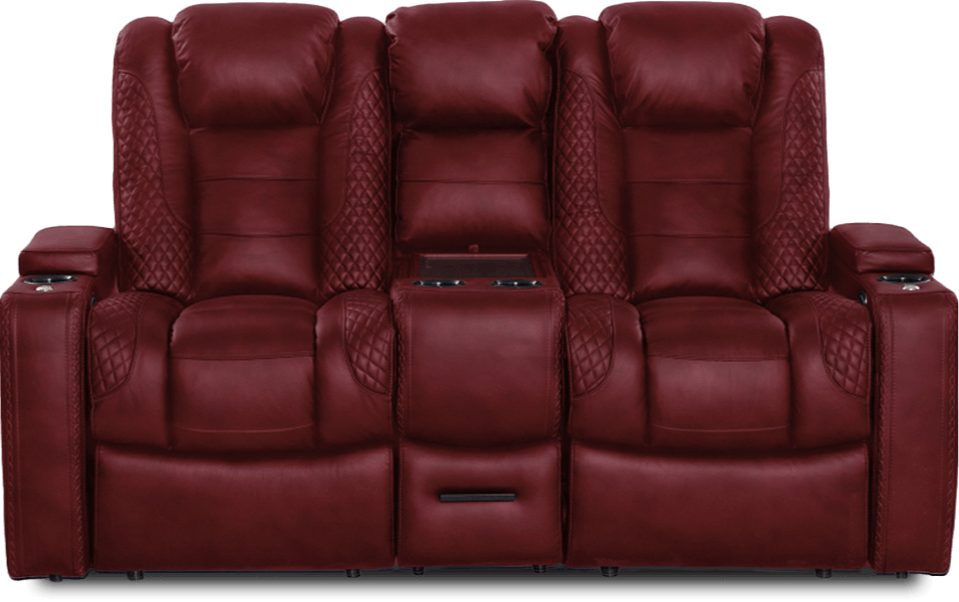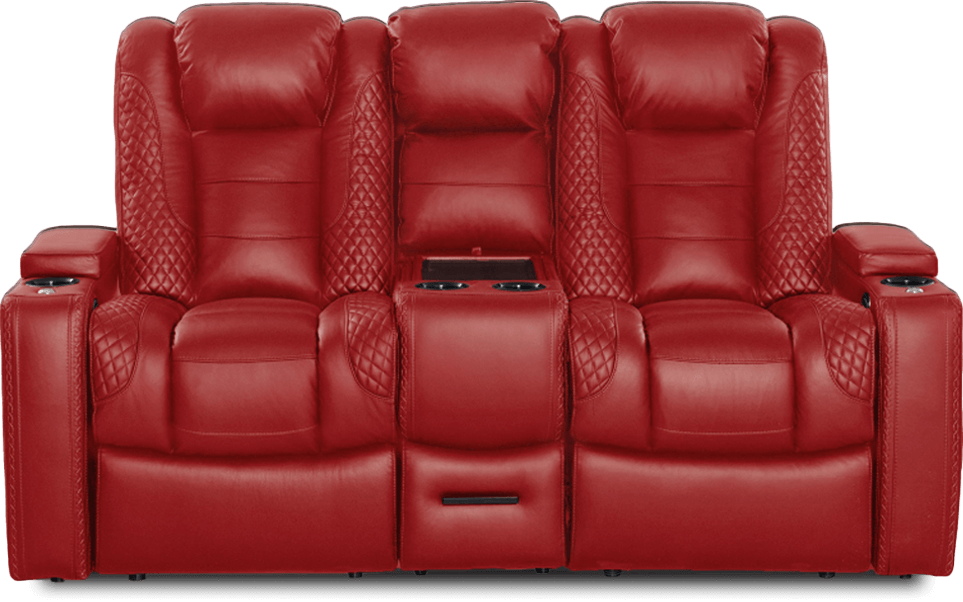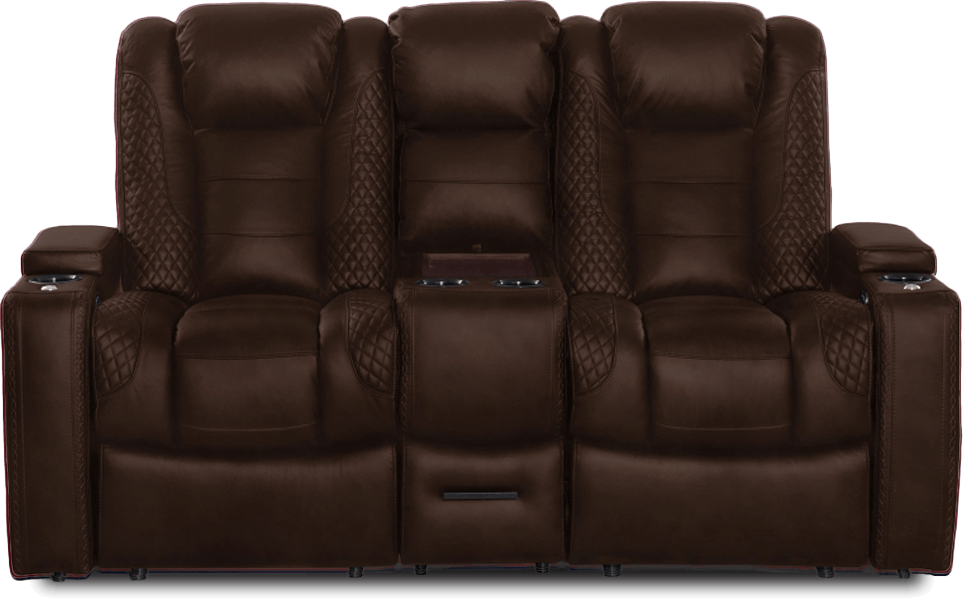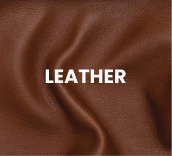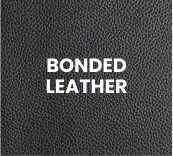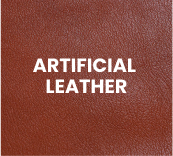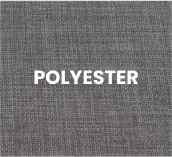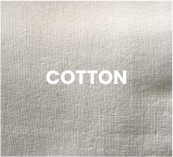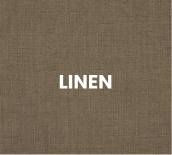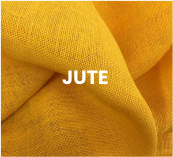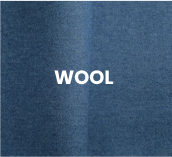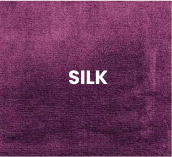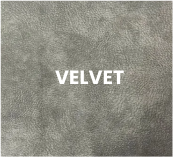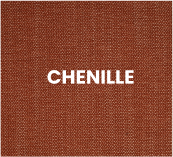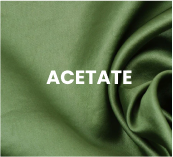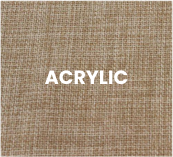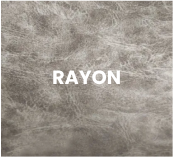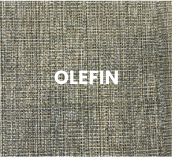Types of
Upholstery
Choosing the right upholstery for your furniture depends on your aesthetics, budget, comfort preferences, and how long you want the material to last.
Upholstering your furniture ensures its longevity. However, there are many types of upholstery fabric to choose from, including leather, cotton, wool, or velvet. Understanding what options in the market are crucial to comfort and stylish furniture.
Our guide will unravel the range of upholstery fabric options available.
But, first, what is upholstery furniture, and how do you know which fabric suits you?
What is
Upholstery?
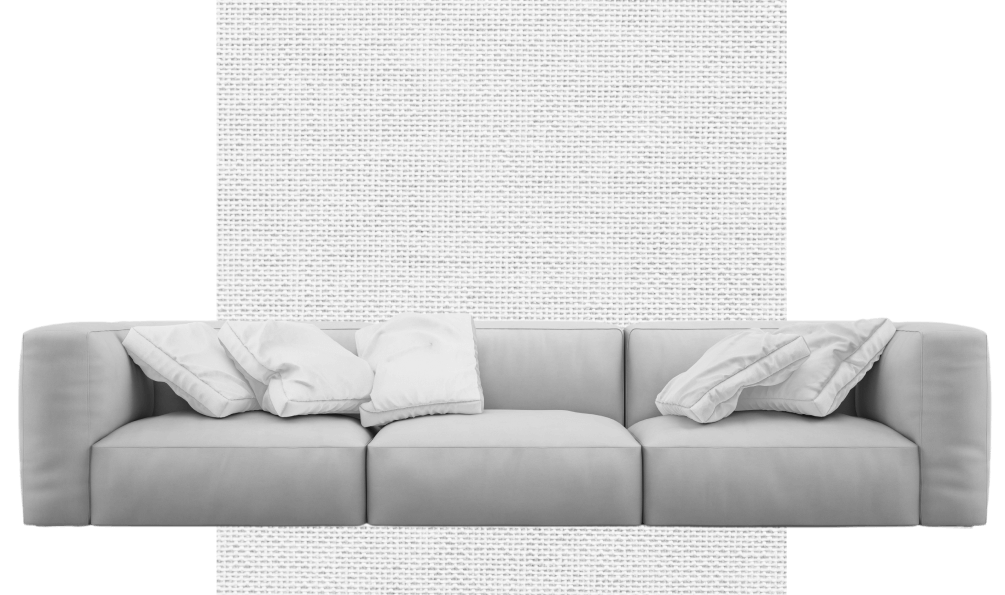
Before diving into the different types of upholstery fabrics, let’s discuss: what is furniture upholstery? Upholstery is a soft, padded textile covering fixed to furniture—from vinyl upholstery fabric to leather.
For instance, the fabric on your armchairs or sofas is upholstery—although you can also upholster single, double-seater, or triple-seater sofas, dining chairs, or couches. It might also refer to the practice of fitting padded coverings to furniture.
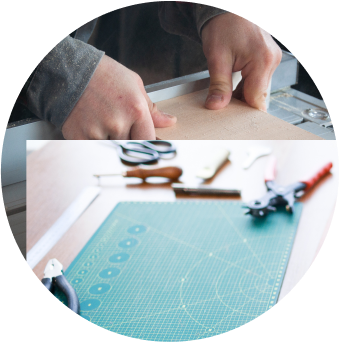
Upholstery is a specialized skill that has existed for hundreds of years. Talented crafters might restore period pieces with quality details, such as diamond tufting, top stitching, channels, webbing, or coil springs—known as reupholstering furniture. However, upholstery also includes modern furniture with custom coverings.
Sometimes, you might hear it referred to as a synonym for fabric or furniture coverings.
Why Upholster Furniture?
Upholstery is a good idea for several reasons. It provides comfort, preserves sentimental pieces, saves money, renews and re-styles existing furniture, and reduces fast fashion.
There are many upholstery options for different furniture types, each with benefits and drawbacks. You can choose a material and style that best suits your home.
We’ll unpack the pros and cons of:
Leather
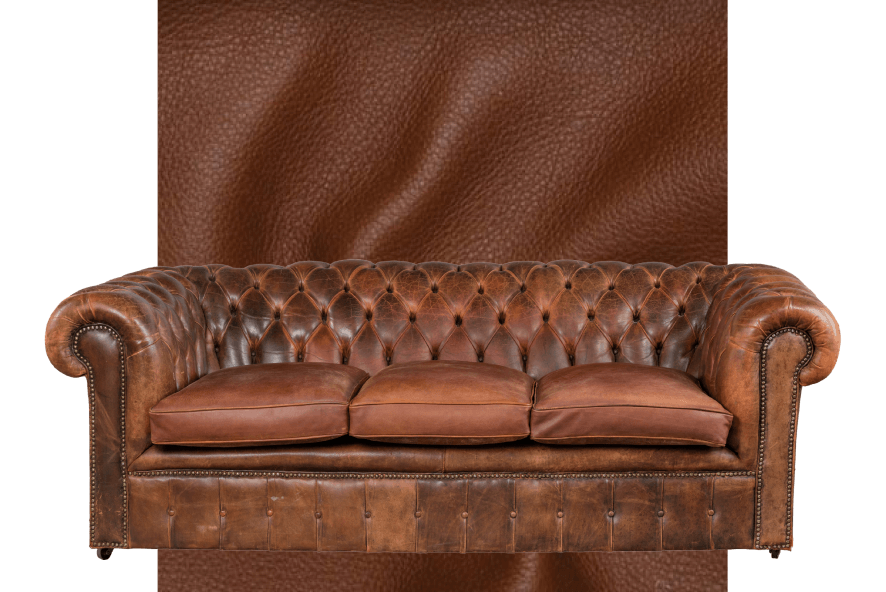
Leather upholstery fabric is one of the most common and widely used materials. It is one of the most prized fabrics for several uses—from clothing and shoes to sofas and armchairs. It’s robust, flexible, and durable.
Leather upholstery furniture is a high-quality natural material made from cow hides (and other animals, such as sheep, goats, equine animals, buffalo, pigs, and aquatic animals).
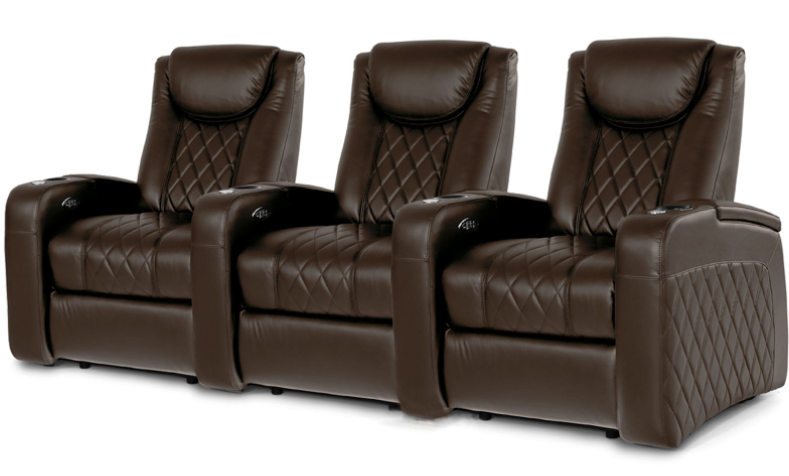
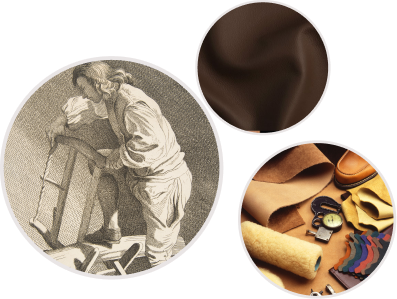
The specific quality of the leather upholstery depends on the breed, lifestyle, and climate.
Many consider it one of the most traditional upholstery materials as humanity has manufactured leather for over 7,000 years.
But is it really as excellent as people believe?
Pros :-
Leather is stain-resistant and durable. You won’t need to take any extra care to look after your leather furniture.
Leather manufacturers can style in almost any color or texture you want, whether black, brown, red, white, or quirky custom color.
Leather has been around for over 7,000 years, and it’s not going anywhere yet. It’s easy to produce and source.
We spend a lot of time sitting on sofas and armchairs, so we want our upholstery fabric to wear well. Fortunately, leather is well-suited for heavy use.
You can get distressed leather that disguises claw marks from your beloved furry friend.
Don’t worry about spilling a glass of red or your morning coffee. Leather will not absorb materials.
Leather complements most other types of home decor and looks stylish.
Cons :-
In an environmentally and socially conscious world, leather falls short of vegan standards.
Genuine leather has a premium status and, therefore, premium costs. You may sacrifice durability if you opt for cheaper leather materials.
Leather is prone to splitting, cracking, and unsightly scratches.
Sharp objects (such as your cat’s claws!) can easily harm your leather upholstery.
If you prioritize comfort, leather upholstery may be too rigid and not as soft as other fabrics.
Bonded
Leather
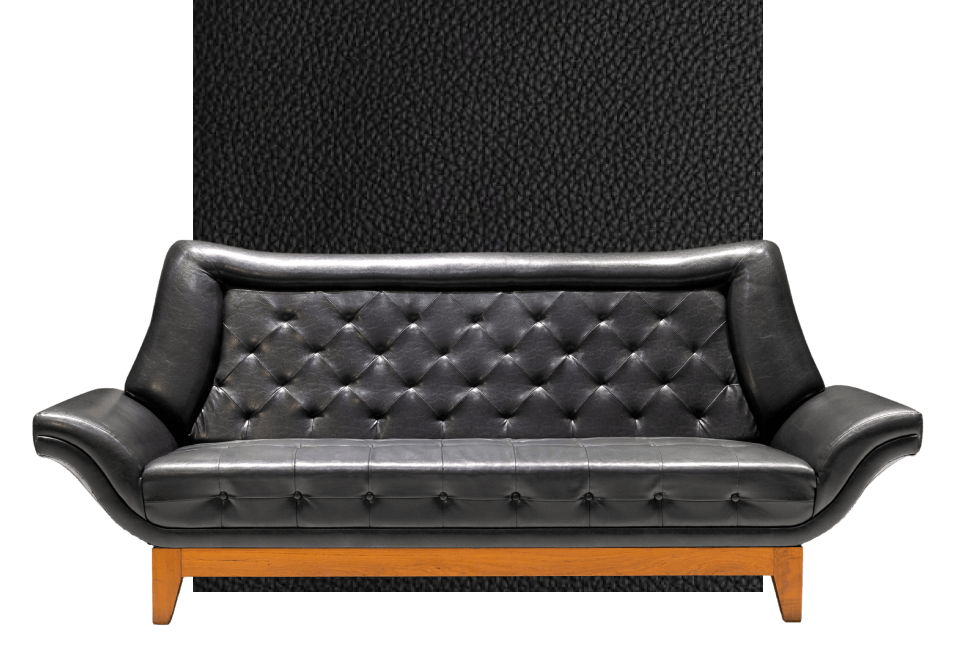
Bonded leather for upholstery is a mix of genuine and artificial leather.
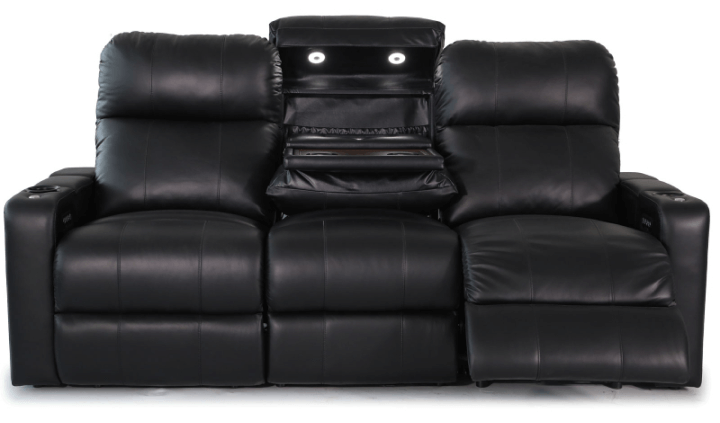
Bonded leather might be a good compromise if you’re unsure about faux leather upholstery but want a cheaper option than real leather.
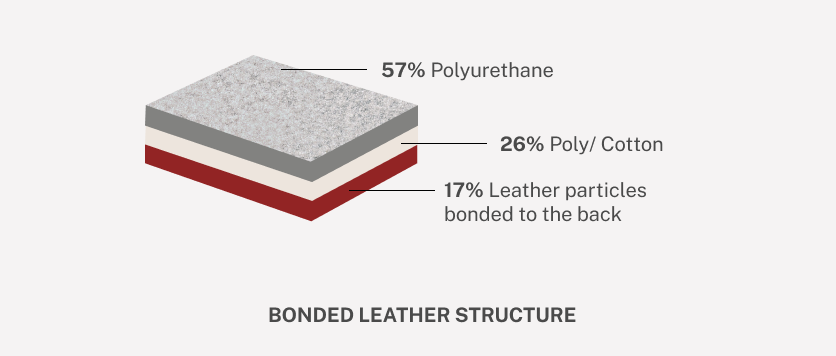
Manufacturers make bonded leather with the leftover scraps and fibers from processing genuine leather and mix it with a polyurethane binder. The fibers roll together with adhesives to bond to a paper backing.
Some manufacturers might also add an additional polyurethane coating and emboss it to give it the texture of the real thing.
Pros :-
Bonded leather uses leftover scraps, reducing waste which is better for the planet than 100% leather.
Like genuine leather, manufacturers can make bonded leather in almost any color or texture.
Good material for families with kids and pets as the bonded leather will survive most attacks.
Bonded leather has the look and smell of real leather without the price tag.
Despite its mismatching manufacturing process, bonded leather has a smooth, uniform texture—often more so than genuine leather.
It’s softer to touch and perhaps more comfortable than genuine leather.
Cons :-
Bonded leather does its best, but it’s not quite as long-lasting as 100% leather.
You must take care of your bonded leather with regular cleaning and leather conditioner to avoid peeling or flaking.
Direct sun can cause colors to fade and worsen peeling or flaking.
While bonded leather is more environmentally friendly than genuine leather, it’s not vegan as it still uses animal products.
Artificial
Leather
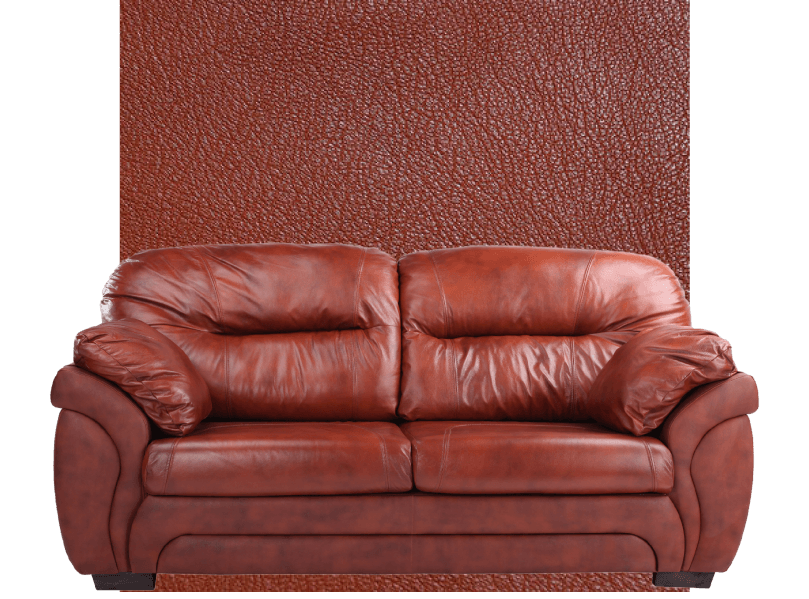
If you’re looking for an authentic faux leather upholstery fabric, consider polyurethane or polyvinyl chloride leather.
Polyurethane (PU) leather
Polyurethane (PU) leather is a soft and flexible material that offers breathability—especially compared to PVC leather. It can quickly adjust to body temperature and remain cool for a long time, ensuring a more comfortable seating experience. Although, it is susceptible to direct sunlight and humidity, which can make the fabric brittle.
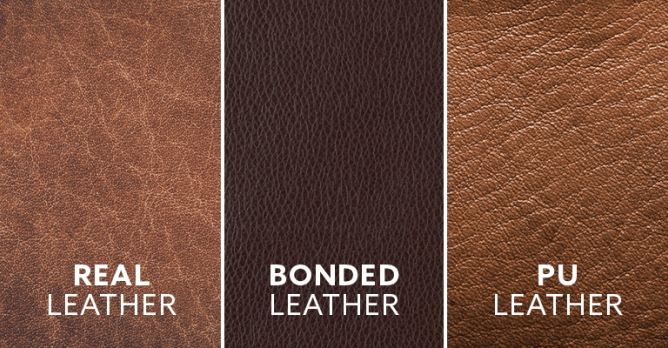
PU has high abrasion resistance, durability, and inherent stain resistance but is not naturally flame resistant.
That said, manufacturers usually add a resistant coating. While PU leather is more economical than genuine or bonded leather, it’s more costly than polyvinyl chloride (PVC) upholstery faux leather.
Polyvinyl chloride (PVC)
Polyvinyl chloride (PVC) leather doesn’t contain any natural leather but manages to resemble the softness, color, and texture of the real thing.
It’s highly durable and flame resistant. Moreover, it’s relatively immune to cleaners and disinfectants, especially compared to PU leather. PVC leather is the most popular artificial leather because of its affordability, color variety, texture, and grain.
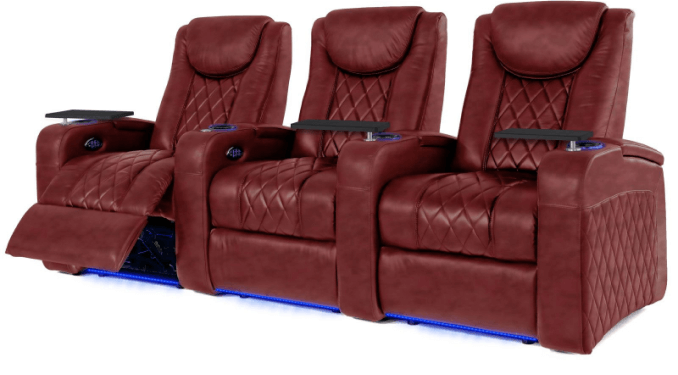
Pros :-
Unlike genuine or bonded leather, artificial leather uses no animal products.
Faux leather products are far less expensive than 100% or bonded leather.
You don’t need to input as much care with faux leather as with genuine or bonded products.
Leather products crack and peel in direct sunlight. While too much might harm PU leather, most faux leather products are far more resistant than genuine leather.
Don’t worry about stains or spillages—faux leather can survive most food and drink stains.
Sunlight won’t harm your faux leather sofa.
Cons :-
PVC, in particular, is not as breathable as other upholstery fabrics.
While durable, faux leather does not retain its luster for long.
Punctures and sharp objects may risk your artificial leather upholstery.
Like genuine leather, faux leather is prone to cracking.
While vegan, faux leather isn’t necessarily the best option for the planet as it can cause excessive waste.
Polyester
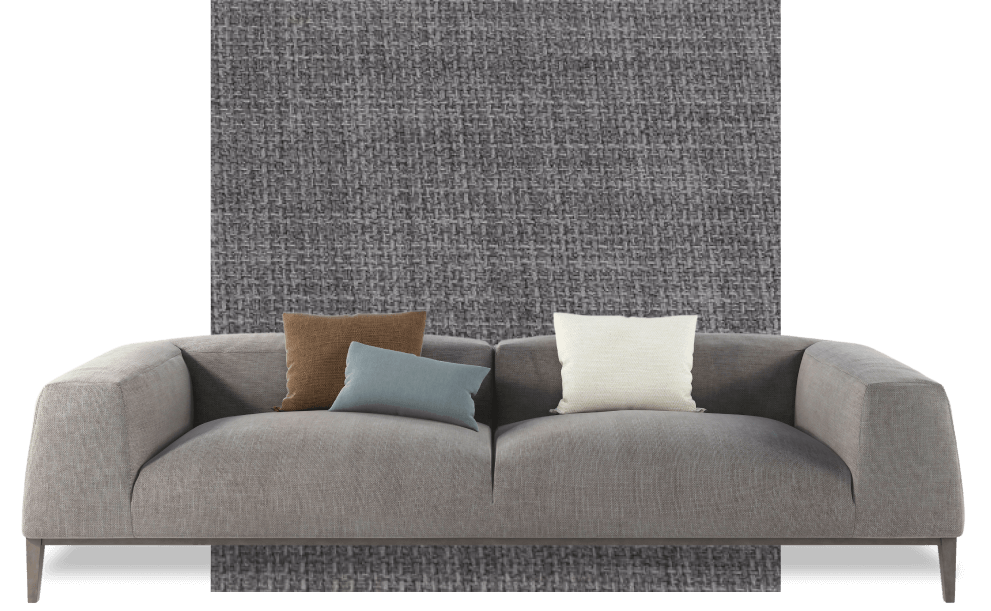
Polyester upholstery fabric is a popular synthetic fiber derived from plastic. It’s soft and easy to clean, making it a highly favorable choice.
Polyester upholstery fabric durability is resistant to pilling, fading, and wrinkling—perfect for your favorite chair.
Pros :-
Wool blends with polyester upholstery are very comfortable.
Don’t worry about water or fire damage. Polyester is highly resistant.
Wool blends stay warm in cold weather and cool in hot weather, ensuring your sofa is the perfect temperature year-round.
Wool is a natural material, and, therefore, polyester wool blends are highly durable and long-lasting.
Polyester does not encourage mold and mildew growth, ensuring it’s fresh smelling for many years.
Your polyester sofa or armchair will look brand new long after you have worn it in.
Cons :-
Polyester is more costly than other upholstery options.
Polyester wool blends use sheep wool.
Cotton
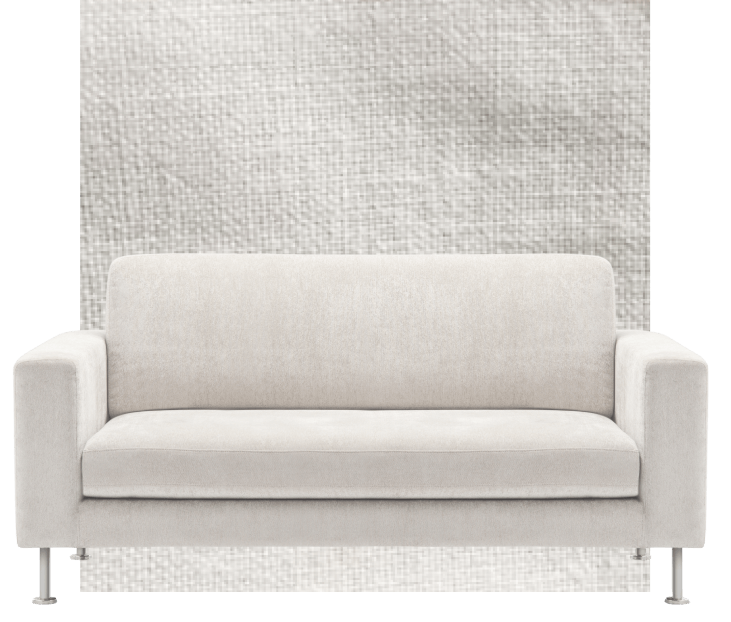
Cotton upholstery fabric is a highly popular choice made of natural fiber and woolly in appearance.
You’ll typically find cotton in outdoor furniture, but it’s a versatile material that will suit any home decor. Moreover, upholstery cotton comes in many price grades to work with any budget.
Pros :-
Cotton is made from plants and is 100% natural without using animal products.
Manufacturers can dye cotton to almost any shade you choose.
Cotton is a soft and comfortable material for practically any furniture upholstery.
As a light material, cotton is very breathable, making it a good choice in summer or hotter climates.
As a natural fiber, cotton is one of the most durable fabrics.
Cotton resists pilling, wear and tear, and abrasion.
Suitable for people with sensitive skin or allergies.
Cons :-
Cotton wrinkles easily, making it unsightly when unkempt.
Cotton is very easy to dye. However, while this is good during manufacturing, cotton might quickly catch the color of your blue jeans. In addition, it will soak in spills rapidly, leading to stains and making your upholstered furniture smell odorous over time.
Linen
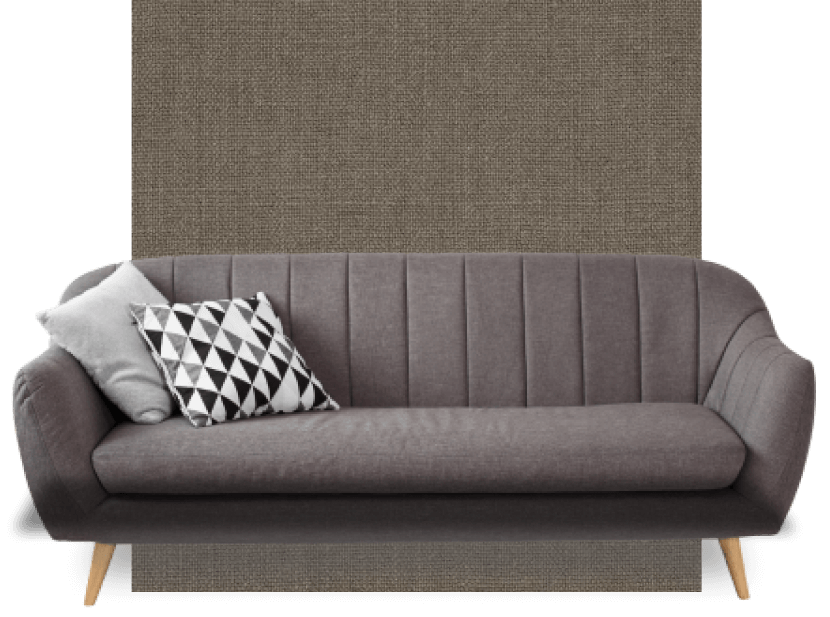
Linen upholstery fabric is a natural fiber made from the flax plant and synthetic materials for durability (and to improve look and feel).
It’s a popular upholstery fabric because it is affordable, moth-resistant, and resists fading. Plus, upholstery linen can have a textured, slubby feel that makes it unique—a feeling that some people like.
Pros
Linen will last you a long time. Its moth-resistant qualities and added synthetic qualities make it highly durable.
Compared to many other upholstery options, linen is very inexpensive.
Unlike other materials, linen gets stronger when wet.
Linen will resist fading, pilling, and abrasion, ensuring it looks good for a long time.
Linen has natural antibacterial properties and is resistant to mildew. You won’t need to worry about stains and smells.
As one of the oldest materials, it has a functional and ethical appeal as a very eco-friendly upholstery option.
Cons
Like cotton, linen wrinkles easily.
Linen is prone to soiling and damaging—therefore, it’s not always suitable for rough, everyday use.
Linen can shrink when not cleaned properly. You’ll need a professional cleaner to look after your linen upholstery.
Jute
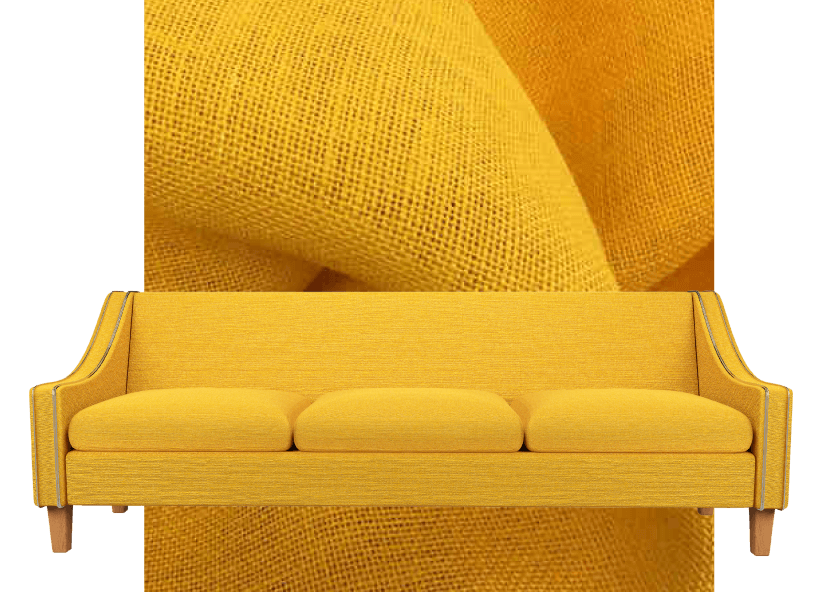
Jute fabric for upholstery is an extracted natural material from the bark of the white jute plant. Native to Bangladesh and India, people traditionally use jute to make mats and rope—it has a rough, abrasive texture.
However, jute pairs nicely with other natural materials like leather or wood.
Pros
Jute has a unique and interesting texture that adds excellent quality to any interior design or home decor.
Just is a popular upholstery material for ottomans and works well with other natural fabrics, like leather.
The color of jute fabric is consistent throughout as manufacturers add the dye to the melted plastic rather than dying the fabric after weaving it.
Jute is strong and long-lasting as it can withstand most wear and tear.
Cons
Unfortunately, jute is prone to wrinkling.
The fabric is rough and rugged, making it quite uncomfortable for sofas and armchairs.
If exposed to direct sunlight for long periods, your jute furniture may turn yellow.
Jute materials might lose their strength when exposed to moisture.
WOOL
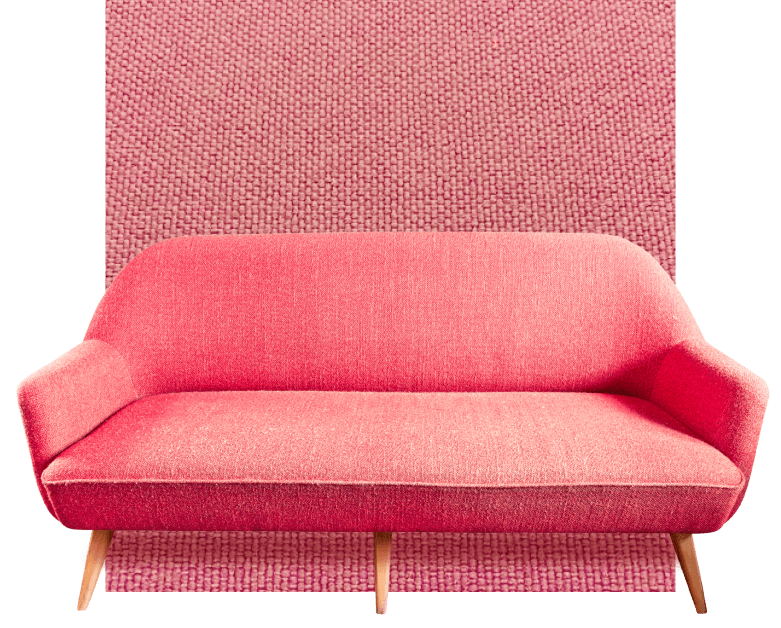
Wool upholstery fabric is another natural material made from sheep that have existed for thousands of years. Wool connotes cozy feelings of warm winter nights. However, wool is excellent in hot weather too. It’s temperature controlling, so you’ll find wool comfortable whatever the climate.
Wool isn’t the most common upholstery fabric, and it’s relatively expensive, but it’s worth considering.
Pros
Wool is an excellent choice for furniture that will endure a lot of wear and tear.
Don’t worry about spilling drinks on your woolen sofa as it’s water resistant. Plus, any water-based stains are easy to clean.
You can use most fabric cleaners or bleach on wool without worrying about harsh chemicals.
Your woolen sofa will still look good and hold its vibrant color for many years.
Manufacturers add the dye to the melted plastic rather than dying the wool fabric after weaving. Therefore, the color is consistent throughout the material.
Cons
Wool doesn’t withstand oil, light, or heat well and might damage prematurely with exposure.
While water-based stains are easy to get rid of, it’s more difficult to remove oil stains.
Wool can become brittle if exposed to too much sunlight.
SILK
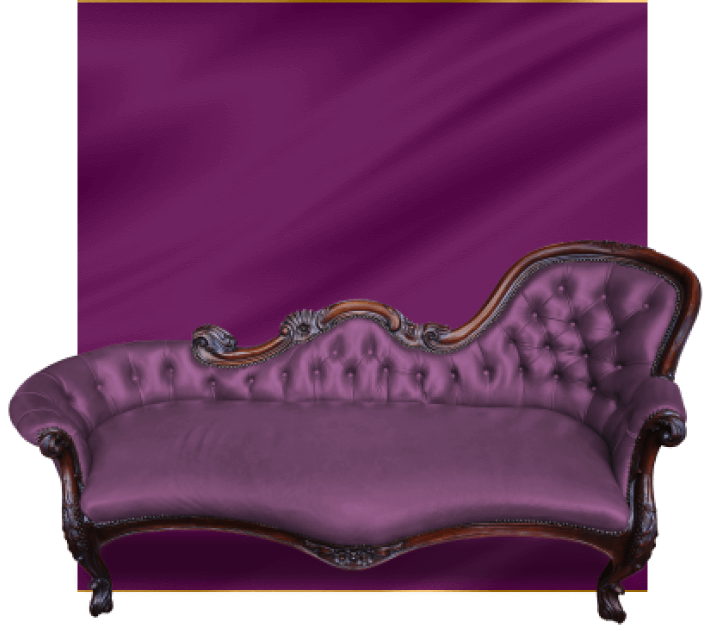
Silk upholstery fabric is a luxurious natural fiber known for its delicacy and softness. Manufacturers extract this lightweight, smooth material from silkworms. It’s best for occasional furniture or more formal items as it’s hard to clean and not suitable for daily use.
If you can afford this luscious upholstery fabric and take the time to care for it, your silk furniture will shine among your interior design.
Pros
Silk is a good investment piece. While it’s known for being delicate, it can last a long time and withstand a lot of wear and tear.
Silk will endure water spills. Plus, water-based stains are easy to clean.
As a natural fiber, silk resists chemicals and fire so that you can clean it with bleach.
Silk retains its color well and won’t fade over time.
Manufacturers add the dye to the melted plastic rather than dying the silk fabric after weaving. Therefore, the color is consistent throughout the fabric.
Cons
Silk is widely-known as a luxurious and costly fabric. It’s a lot more expensive than other upholstery options.
You will need professional cleaners to look after your silk as it is a very delicate fabric.
Silk isn’t suitable for furniture that will endure rough use or for houses with children and pets. Plus, spills and stains are hard to remove.
Silk is susceptible to damage by direct sunlight.
Velvet
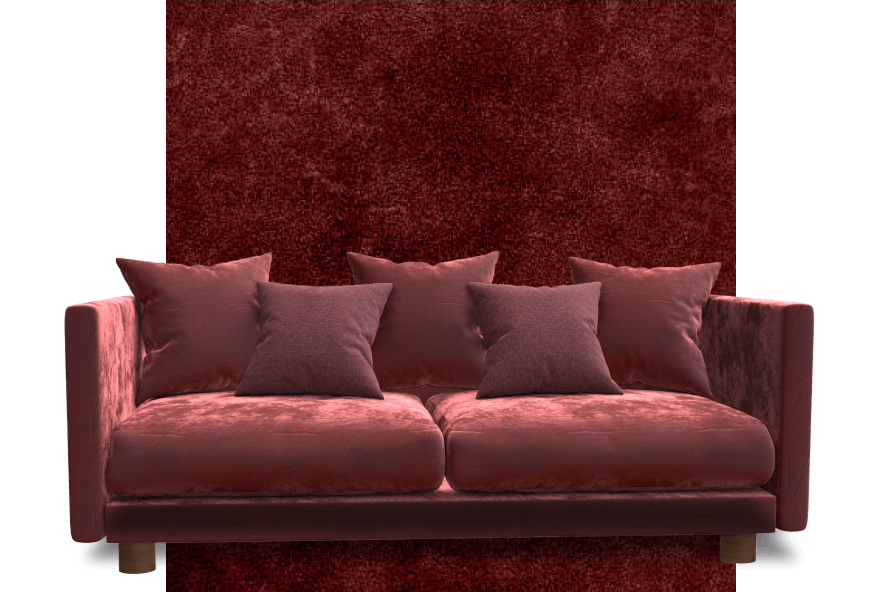
Velvet upholstery fabric is made of natural or synthetic fibers and, like silk, is known for its luxurious qualities. In fact, traditionally, velvet was made out of silk. Today, manufacturers make velvet from linen, cotton, wool, and synthetic fibers.
Velvet is thicker and tougher than silk but still challenging to maintain and clean. Velvet fabric upholstery is perfect for a regal-looking chair or an indulgent plush couch.
Pros
Velvet is luxuriously and distinctly soft to touch and comfortable.
This fabric has graced palaces and royal furniture for over a thousand years and has never gone out of fashion. Try velvet upholstery if you want your living room to look more regal.
Velvet has a nap where the fiber piles lie and catch the light beautifully. It reflects light across the shape of the furniture and accentuates its form.
Well-known for its rich colors, velvet dyes are vibrant and eye-catching.
Like wool, velvet maintains its temperature in different climates. It stays cool in hot weather and warm in cold weather.
Cons
Velvet is notoriously hard to clean and look after. It requires specific care.
Velvet is highly luxurious and comes with a hefty price tag.
The durability of velvet depends on how densely woven the piles of fibers are—some velvet upholstery might not last very long.
Velvet is best for lush furniture meant for proper use rather than daily items exposed to regular wear and tear.
Chenille
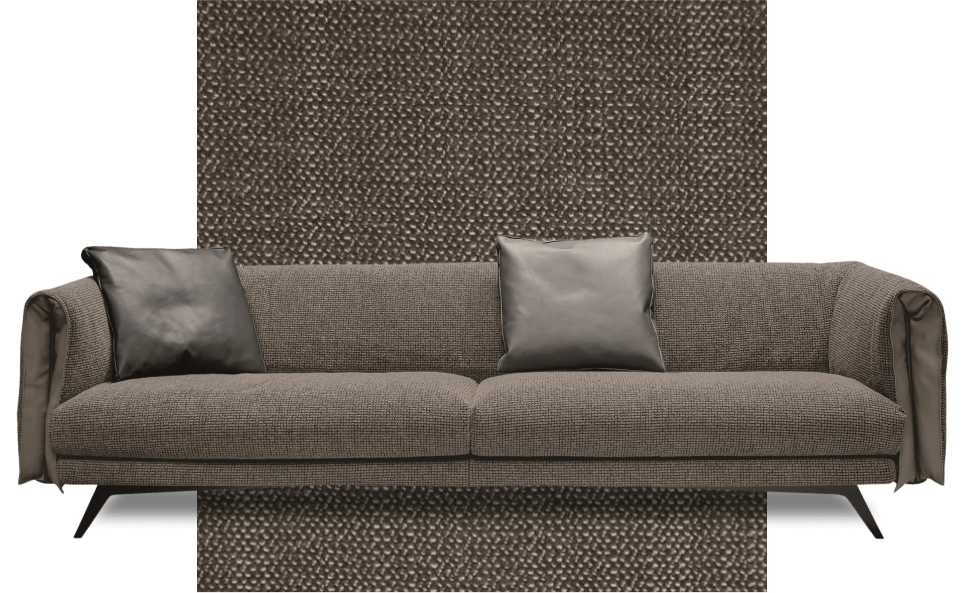
Chenille upholstery fabric gets its name from the French word for ‘caterpillar’. It’s a woven fabric made from a variety of different fibers, such as cotton, silk, wool, and rayon.
Chenille fabric upholstery is an ultra-soft fabric that is easy to stretch and, therefore, requires backing to hold its shape.
You’ll often find chenille upholstery on children’s furniture or everyday comfy pieces.
Pros
Chenille upholstered furniture is very soft, comfortable, and cozy. Many cushions and blankets use chenille for this very reason. If comfort is your priority, try chenille.
Chenille is perfect for children’s furniture and everyday items because of its durability.
You don’t need special cleaners or methods to clean the chenille. You can clean it at home conveniently.
You can get chenille upholstery in most colors.
Cons
Chenille stretches easily and requires backing, which adds to the cost.
It’s not good for pets as dust and debris can easily catch in the long fibers. While it’s easy to clean, pet hair might be annoying.
Acetate
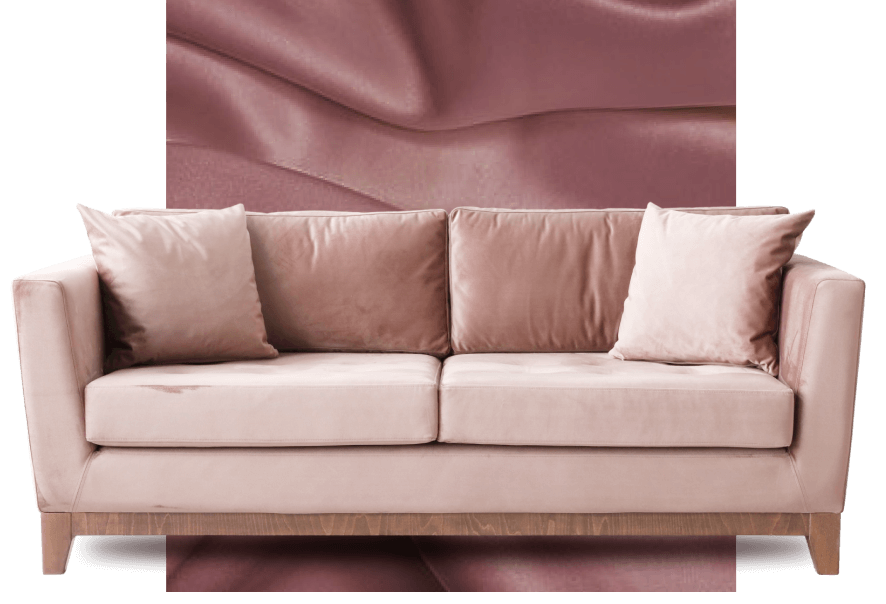
Acetate is a synthetic fiber material for furniture upholstery. It is meant to imitate silk and is considered a cheaper alternative.
Acetate is very popular for upholstery as it has the desired luxurious sheen and luster of silk without the hefty price tag.
Pros
If you live in a particularly humid climate, acetate will withstand humidity greater than silk or other upholstery fabrics.
Acetate has the much-loved lustrous shine and softness of silk.
Acetate won’t pill over time—it’s relatively long-lasting.
Acetate is far less expensive than silk and other natural upholstery fabrics. If you’re looking for a cheap alternative to silk, try acetate.
Don’t worry about mildew and mold. Your acetate furniture will look and smell fresh for many years.
Cons
Acetate lacks strength and might easily tear or puncture with sharp objects.
Acetate wrinkles very easily, which may ruin the luxurious look of your furniture
Like silk, acetate is still relatively a delicate fabric and will need dry cleaning.
Acetate is unsuitable for everyday use and vulnerable to scratches and wear and tear.
Acetate doesn’t stretch very well, making it vulnerable to regular use.
AcryliC
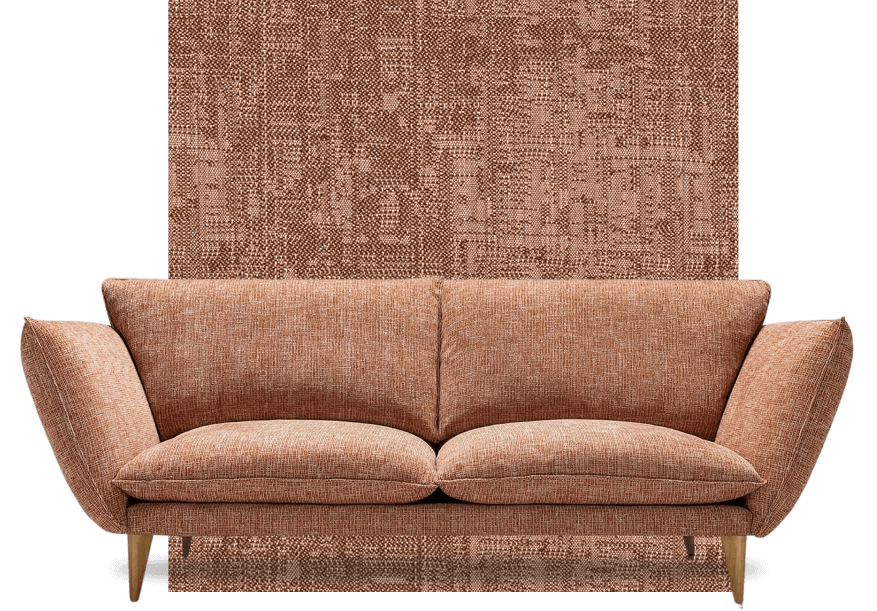
Acrylic upholstery fabric imitates wool. It’s a popular furniture upholstery fabric because of its affordability.
Acrylic uses a synthetic polymer known as acrylonitrile. It’s far cheaper than other synthetic and natural fibers. It has excellent warmth and insulation. However, acrylic isn’t very breathable.
Pros
Acrylic is very soft and comfortable for relaxing furniture upholstery.
Acrylic is very easy to wash and clean. Plus, it dries quickly, so you can get back to watching your favorite shows without much interruption.
You can get acrylic in various vivid, beautiful colors.
Acrylic works well as a fabric for outdoor furniture as it can withstand direct UV sunlight.
Cons
Unfortunately, acrylic upholstery can develop excessive pilling, which is unsightly and makes your furniture age quickly.
Acrylic material can melt if exposed to high heat or flame.
Some people are allergic to acrylic.
Acrylic isn’t very durable. As well as pilling, it can quickly wear and tear.
RAYON
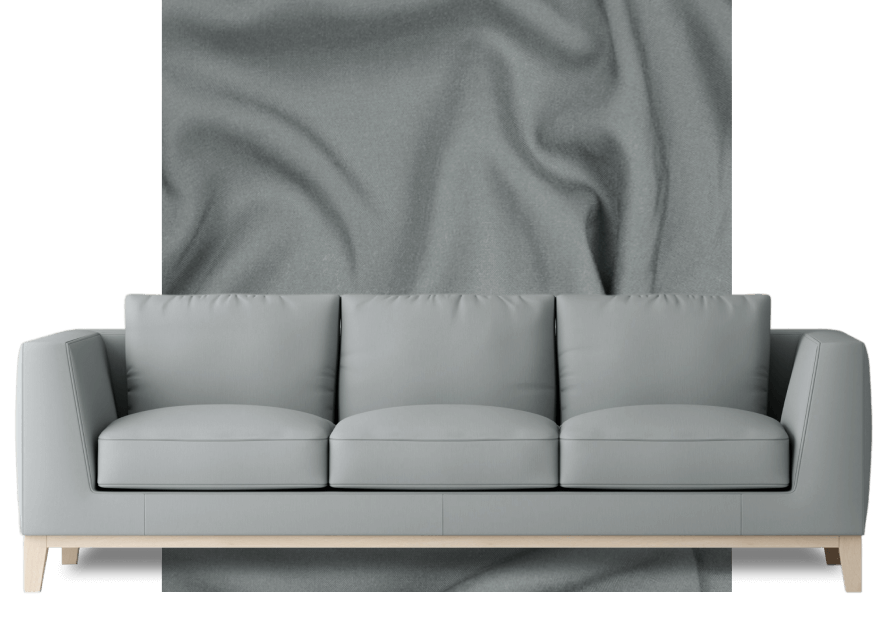
Rayon upholstery furniture uses a semi-synthetic fiber from regenerated cellulose, typically from wood pulp. Manufacturers can use any plant to make rayon but usually, opt for the eucalyptus tree.
To produce rayon fibers, you must put the plant cellulose through a process that involves chemicals, water, and energy.
Rayon originated just over a hundred years ago. We now use newer varieties of material in furniture upholstery. It’s a very versatile fabric that offers comfort and softness.
Pros
Rayon is incredibly cheap to manufacture and a highly inexpensive fabric upholstery option.
With many qualities similar to natural fibers, rayon is very soft and comfortable, making it perfect for sofas, couches, and armchairs.
As it’s not a natural fiber, moths won’t eat your rayon sofa and chairs. Plus, rayon will resist mold and mildew.
Modern varieties of rayon are relatively durable—older rayon fabrics were less long-lasting.
Cons
Rayon doesn’t retain its original appearance and newness for very long. You might find you have to reupholster your rayon furniture relatively regularly.
Sharp instruments and pet claws will easily scratch rayon fabric upholstery.
Rayon is prone to wrinkling easily.
Rayon is not water-resistant. As a result, it will quickly lose its original appearance when it gets wet or moist.
Rayon stretches easily but with a very low elastic recovery. Therefore, it will rapidly lose any appearance of looking new.
OLEFIN
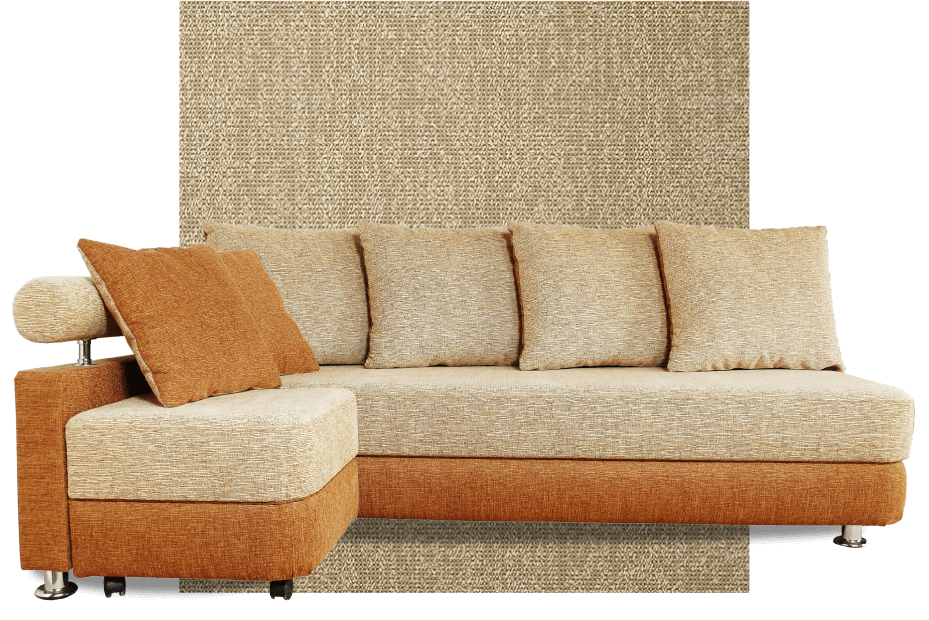
Olefin furniture upholstery is a petroleum-based synthetic fiber with a woolly appearance. Manufacturers make olefin with melted plastic, which is incredibly durable and a popular choice for outdoor furniture. However, it’s not the most attractive fabric.
So, if you’re looking for a tough, long-lasting, and easy-to-clean fabric, try olefin. But if you value style, you may find olefin too rough-looking.
Pros
There’s a reason olefin is a popular material for outdoor furniture. It can endure a lot of wear and tear and survive outdoor weather most of the year.
Olefin is water resistant, making it perfect for withstanding the rain or the occasional spilled drink. Plus, water-based stains are easy to clean.
Olefin is highly durable and can withstand harsh chemicals and fire. You can use bleach to clean any more stubborn stains without damaging the fabric.
Olefin will withstand sunlight and keep its vibrant color all year round.
Manufacturers add the dye to the melted plastic rather than dying the olefin fabric after weaving. Therefore, the color is consistent throughout the material.
Cons
Olefin isn’t infallible. Oil, light, and heat may harm olefin upholstered furniture.
Water-based stains are easy to remove, but oil stains are more challenging to get rid of.
Too much direct sunlight exposure might make the material brittle and hard.
Choosing the Right Type
of Upholstery Fabric
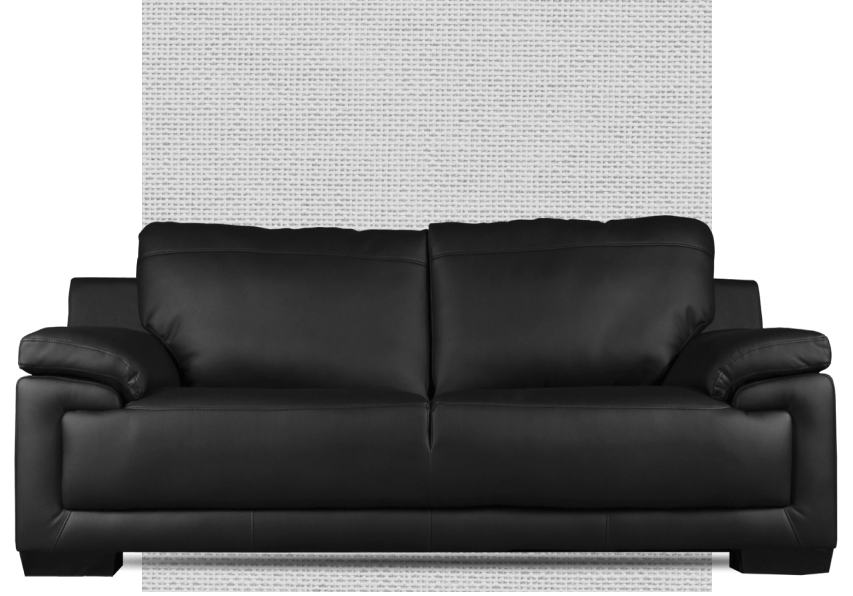
With so many options, how do you know whether upholstery leather or acrylic is the best option? Do you opt for expensive silk or the cheaper acetone alternative?
While all types of upholstery have downsides, each material is best suited to a particular need.
Choose more durable fabrics if you have kids and pets or are looking for outdoor furniture upholstery. However, if you have formal pieces, consider silk or velvet. Your upholstery choice depends on your budget, preferences, and style.
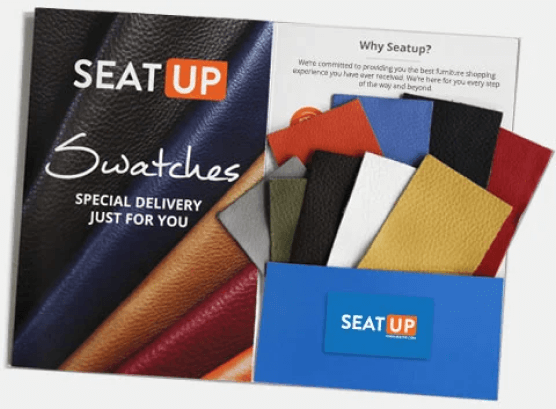
Leather is, of course, the most popular and traditional option. However, within the leather varieties, you have genuine leather, bonded leather, or faux leather—each with benefits and drawbacks. Consider budget, environmental concerns, and durability.
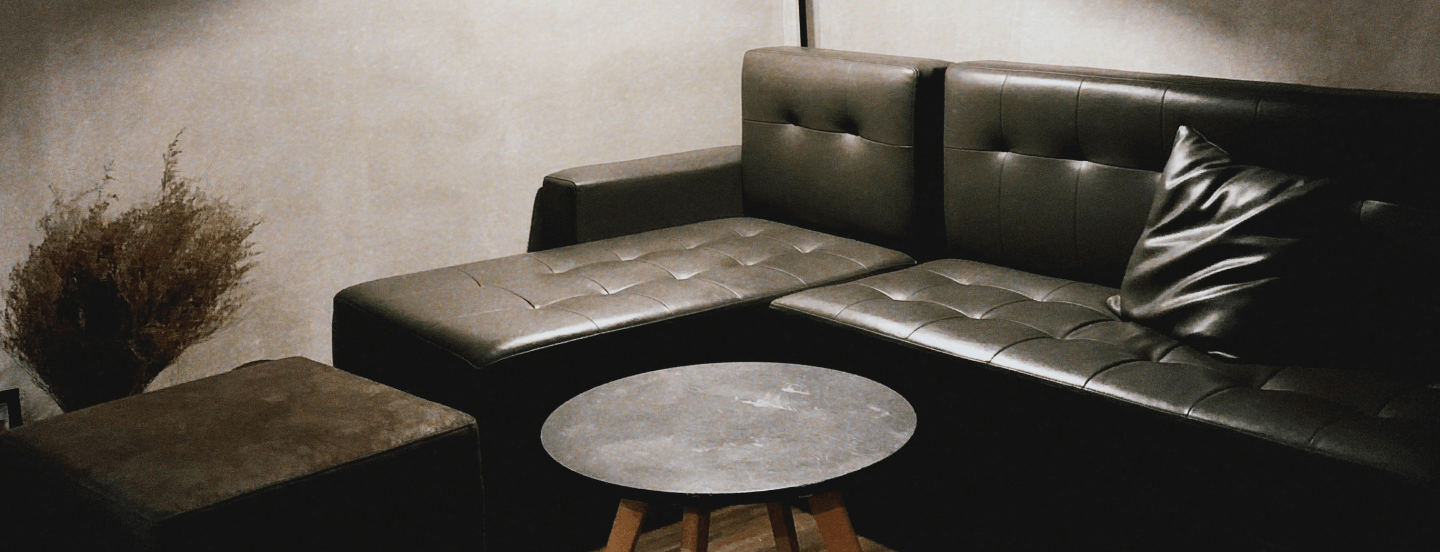
Most importantly, upholstering can increase the lifespan of your furniture.
Even if you choose the quickly deteriorating rayon fabric, it will protect your sofa and prevent you from needing to buy a new one for many years—even if you need to reupholster more regularly. We can help you choose the perfect upholstering material for your much-loved furniture.

